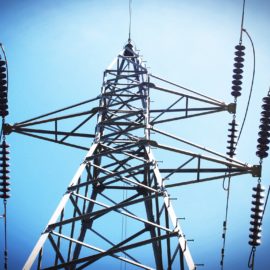
Louisiana has an emissions problem. China has an emissions problem, in fact they lead the world in emissions today but the US has emitted the most since 1950 and we are in second place for current emissions. We have no basis to throw stones or to be complacent on cutting emissions.
Readers dismissing the importance of reducing fossil fuel emissions to secure a future for Louisiana’s coastal communities usually have three concerns. Today let’s take them one at a time. 1) What about China? Some who oppose reducing U.S. fossil fuel use to curtail emissions point to this fact: China has become the world’s largest emitter — by far. In 2020 China produced 28% of the world’s emissions. In second place was the U.S., at 15%, followed by the European Union (9%), India (7%), Russia (5%) and Japan (4%). But while China is today’s biggest problem, past U.S. emissions are the largest reason we have the crisis to begin with. Recent research shows the U.S. is responsible for 20% of the total emissions build-up since 1850 that is causing climate change. China is a distant second at 11%. Our nation not only has a major responsibility for creating the crisis, but we also have a responsibility as the world’s wealthiest nation to lead the recovery. And we have selfish motives. Like deadly viruses, climate does not respect political boundaries. Waiting for other countries to act on emissions would have been like waiting for other countries to develop a vaccine before addressing COVID-19. So, yes, how quickly China acts to dramatically reduce its emissions is a major key to the world’s chances of slowing the rate of sea level rise. And recently it signed a major international agreement to do just that. But anyone in Louisiana supporting a “wait until China acts” policy is acting against the best interests of this state. And that’s because the state’s own coastal master plan shows quickly reducing emissions is our best chance to avoid disaster.
nola.com
Bob Marshall make good points here. No, we can’t wait for others to improve. So, with one bad excuse down we have two to go and his second is subsidence.
2) It’s subsidence, not sea level rise. There’s no question the sinking of our delta landscape (caused by levees and canal dredging for oil and gas) has been the major reason for most of our coastal woes — so far. While the Grand Isle tide gauge shows sea level here rising four times faster than the rest of the nation, most of that has been due to sinking — so far. But the Coastal Protection and Restoration Authority knows in the decades ahead the rate of sea level rise will climb past that of subsidence — and never stop. That’s why its computers show some of the wetlands it rebuilds by 2050 with the Myrtle Grove sediment diversion will be drowned by the Gulf by 2070. The science is clear we can’t stop sea level rise caused by previous emissions; it will continue for centuries. But it also shows we have time to slow its rate by reducing emissions soon. That could give south Louisiana time to develop adaptations to help coastal communities and industries survive in this new reality.
Subsidence is a problem and in the past the main one. But times are changing and sea level rise will be greater. The two combined are bad enough but if we can stop one then we should. Now to the last point, a lack of drama.
3) There has been no dramatic increase in sea level rise or temperatures! Some readers object to the use of adjectives such as “dangerous” and “dramatic” to describe the increases in temperatures and sea level rise over the last decade. Admittedly the changes being reported are hard to see and, in some places, even feel. But tiny increases in the world’s average temperature can result in the dramatic changes. Indeed, they already have. The 1 degree Celsius increase worldwide since the 20th century is the average, but to get there many places had much higher temperatures. Water expands when warmed, increasing the volume of the sea. And water stored as ice on land has been melting faster, adding more water to the ocean, further increasing and accelerating its rise. Just a single inch in the total volume of the oceans — which cover 71% of the planet — means a dramatic increase in water available for hurricanes surge, allowing them to reach further inland. Meanwhile, as ocean temperatures have hit record highs they have fed larger and more destructive hurricanes as well as record rainfalls inland. That’s why recent research predicts those 100-year floods from rainfall or storms could happen annually by 2050.
So the three are China, subsidence and a lack of drama. But we were worse than China in the past and are still close to them in emissions. Subsidence is bad but the two, subsidence and sea level rise are dangerous. And a lack of drama doe s mean the low levels are not hurting us.
Those are the answers to the doubts. It’s all based on science, which is based on records and evidence. Hope this helps.
Thanks, Bob and it does. However will the skeptics listen?



